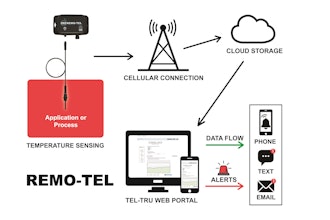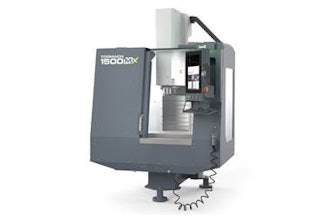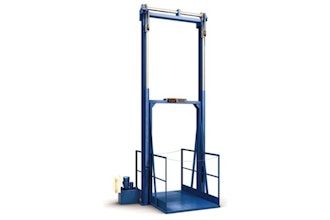
In the dynamic realm of hardware development, the role of a product manager has undergone a significant metamorphosis. Traditionally seen as intermediaries translating customer needs for engineering teams, modern product managers have ascended to pivotal leadership and innovation positions. This evolution is driven by factors that reshape their responsibilities and demand a more strategic approach.
In this exploration, we dissect the four key elements influencing this transformation and delve into the critical responsibilities and tools that define the role of the modern product manager.
4 Factors Reshaping the Product Manager's Role
1. Customer-Centric Solutions
The traditional model, where features emanate from engineering to consumers, is evolving. Product managers now spearhead customer-centric solutions by understanding and addressing customer pain points. The shift reflects heightened customer expectations for seamless experiences and immediate problem-solving.
2. Complexities of Modern Hardware Products
As software integrates seamlessly with hardware, product managers become orchestrators, ensuring effective communication between hardware and software teams. A deep understanding of both domains is crucial to deliver functional, cohesive, and user-friendly products.
3. Agile Product Development Practices
The integration of software demands agile practices, necessitating iterative approaches to pivot swiftly in response to market changes. Product managers must adapt and guide teams through iterative development cycles for sustained innovation.
4. Rapid Technological Change
The pace of technological evolution opens doors to innovation but demands adaptability. Product managers must envision products that meet current technological needs while anticipating future trends to stay competitive.
The Role of the Modern Product Manager
Product managers are no longer mere translators; they are visionaries and leaders. Bridging the gap between customer needs and engineering realities, they prioritize market ideas based on trends and needs, ensuring the final product aligns with customer expectations, financial viability, and technical feasibility.
1. Become Customer-Centric Leaders
Recognizing that customers may not always articulate their needs, product managers must exhibit vision and creativity. Henry Ford's famous quote underscores the importance of understanding desires versus needs.
2. Understand the Difference Between Desire vs. Need
Distinguishing between fulfilling desires and solving problems provides a profound understanding of consumer psychology. Innovations like the shift to electric vehicles exemplify meeting needs beyond immediate wants.
3. Integrate User Experience in Product Design
Collaboration with UX designers is crucial to enhance aesthetics and usability. Deep insights into consumer pain points, behaviors, and motivations drive design decisions for heightened user satisfaction and loyalty.
4. Provide Product Leadership
Transitioning to decision-makers, product managers balance meeting customer needs with company goals. Strong analytical and organizational skills guide effective resource allocation for successful product outcomes.
5. Lifecycle Management and Iterative Development
Beyond product launches, product managers oversee entire lifecycles, driving ongoing improvements based on customer feedback. Iterative development ensures products remain relevant and competitive in the long term.
6. Engage With Company Stakeholders
Effective communication with stakeholders, including executives, engineers, and customer success teams, is vital. Connecting with each stakeholder advances product development and aligns with broader business goals.
7. Promote Collaboration Among Teams
Encouraging cross-functional collaboration enhances problem-solving and innovation. Collaboration is essential for building hardware and software products in the complex manufacturing process.
8. Product Roadmaps to Guide Development
Product roadmaps serve as a single source of truth, aligning teams with timelines, mapping dependencies, tracking progress, and highlighting future goals. They are indispensable tools for keeping development on track.
Essential Tools for the Modern Product Manager
Navigating the evolving product development landscape requires robust tools. Gocious roadmap management software is tailored to meet the challenges faced by product managers. A powerful ally, Gocious empowers product managers to streamline development processes effectively.
In essence, the contemporary product manager has transcended the traditional confines of being a mere intermediary and has seamlessly transitioned into the role of a strategic leader. This evolution is characterized by a multifaceted approach that involves navigating the intricate complexities of hardware development with a blend of agility, innovation, and an unwavering commitment to customer-centric principles.
The demands of the modern marketplace necessitate a paradigm shift in the product manager's role, where they are not just facilitators but visionaries orchestrating the entire product lifecycle. Agility becomes a key attribute in this dynamic environment, allowing product managers to swiftly adapt to ever-changing technological landscapes and market dynamics.
The ability to pivot quickly in response to emerging trends, customer feedback, and competitive shifts is pivotal in ensuring the sustained relevance and success of the products they champion.
Innovation stands as a cornerstone of the modern product manager's toolkit. Beyond merely meeting customer expectations, these leaders strive to anticipate and exceed them. They are at the forefront of incorporating cutting-edge technologies, envisioning novel solutions to persistent challenges, and fostering a culture of continuous improvement within their product teams. By embracing innovation, product managers stay ahead of the curve and contribute to the broader narrative of industry advancement.
Crucially, the emphasis on customer-centricity sets the modern product manager apart. In an era of dynamic and diverse consumer preferences, these leaders prioritize understanding the intricacies of user experiences, preferences, and pain points. This customer-centric approach informs every stage of the product development process, from ideation to post-launch enhancements.
By placing the customer at the heart of decision-making, product managers ensure that their creations resonate with end-users, fostering loyalty and sustainable success.
As technology continues its relentless advance, product managers must not only keep pace but also proactively embrace the evolving nature of their role. This entails staying abreast of emerging technologies, industry trends, and market shifts. It involves cultivating a mindset that thrives on adaptability and continual learning, allowing product managers to navigate the complexities of an ever-changing landscape with confidence and foresight.























